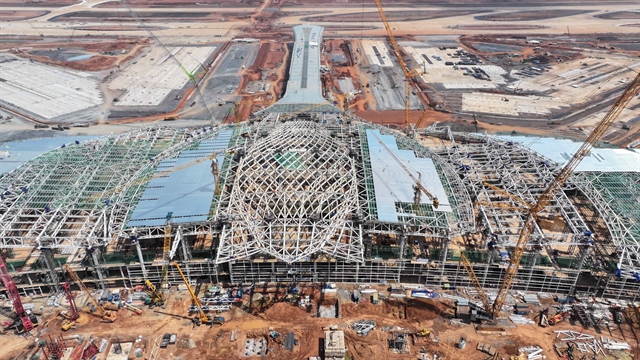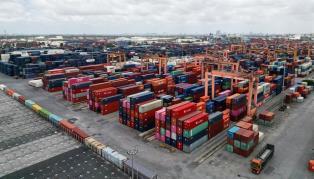Global aviation analytics firm OAG forecasts that Long Thành International Airport in southern Việt Nam could become one of Asia’s mega airports, serving up to 100 million passengers annually within the next decade.

HÀ NỘI — Global aviation analytics firm OAG forecasts that Long Thành International Airport in southern Việt Nam could become one of Asia’s mega airports, serving up to 100 million passengers annually within the next decade.
In a recent blog post titled '100 million club: The rise of mega airports' on its website, OAG highlighted the growing influence of emerging airports across Asia.
Currently under construction, the airport in Đồng Nai Province is expected to be among several new entrants to the 100 million club in the next decade, which would reshape the global air travel industry.
Currently, there are only five airports worldwide that handle over 100 million passengers per year. These include Atlanta and Dallas/Fort Worth in the US, Dubai in the UAE, Tokyo Haneda in Japan and London Heathrow in the UK.
Long Thành is being developed on a 5,000ha site with a total investment of VNĐ336 trillion (US$13 billion) to replace capacity from HCM City’s overburdened Tân Sơn Nhất Airport.
The airport will be built in three phases. The first phase is scheduled for completion by 2026. One runway, a passenger terminal and supporting facilities will be built during this phase, with a capacity of 25 million passengers and 1.2 million tonnes of cargo per year.
In the second phase, the capacity will be increased to 50 million passengers and 1.5 million tonnes of cargo by 2035. In the third phase, the airport will reach its full designed capacity of 100 million passengers and five million tonnes of cargo by 2050.
Other airports that could join the 100 million club include Singapore's Changi Airport, Hong Kong International Airport, Suvarnabhumi Airport in Bangkok and Incheon International Airport in Seoul.
OAG also said that Asian governments see these aviation hubs as catalysts for foreign and domestic investment, tourism and employment, adding that Asian airports will be well placed to serve the surge in demand for domestic and international air travel in Asia, driven by rapid economic growth, the rising middle class and urbanisation. — BIZHUB/VNS





